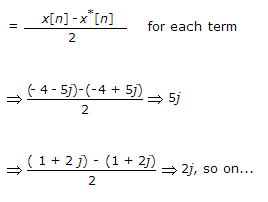Electronics and Communication Engineering - Signals and Systems
Exercise : Signals and Systems - Section 3
- Signals and Systems - Section 1
- Signals and Systems - Section 2
- Signals and Systems - Section 3
- Signals and Systems - Section 4
- Signals and Systems - Section 5
- Signals and Systems - Section 6
- Signals and Systems - Section 7
- Signals and Systems - Section 8
- Signals and Systems - Section 9
- Signals and Systems - Section 10
21.
A signal x(n) = sin(ω0n + φ) is the input to a linear time invariant system having a frequency response H(ejω) If the O/P of the system is Ax(n -n0), then the general form of H(ejω) will be
Answer: Option
Explanation:
y(n) = A x(n - n0)
⇒ A sin (ω0(n - n0) + Φ)
⇒ A sin (ω0 n - n0ω0 + Φ) and ∠4 (ejω) is - n0ω0 + 2pk.
22.
Fourier transform of -jt f(t) is
Answer: Option
Explanation:
It is duality property of differentiation.
23.
A casual system having the transfer function  is excited with 10 ∪(t). The time at which the output reaches 99% of its steady-state value is
is excited with 10 ∪(t). The time at which the output reaches 99% of its steady-state value is
 is excited with 10 ∪(t). The time at which the output reaches 99% of its steady-state value is
is excited with 10 ∪(t). The time at which the output reaches 99% of its steady-state value isAnswer: Option
Explanation:




 .
.
24.
For exponential function e-at the Laplace transform 1/(s - a)
Answer: Option
Explanation:
 .
.
25.
Consider the sequence x[n] = [- 4 - j5 1 + J2 4]
Answer: Option
Explanation:
Conjugate ant-symmetric part

Quick links
Quantitative Aptitude
Verbal (English)
Reasoning
Programming
Interview
Placement Papers
